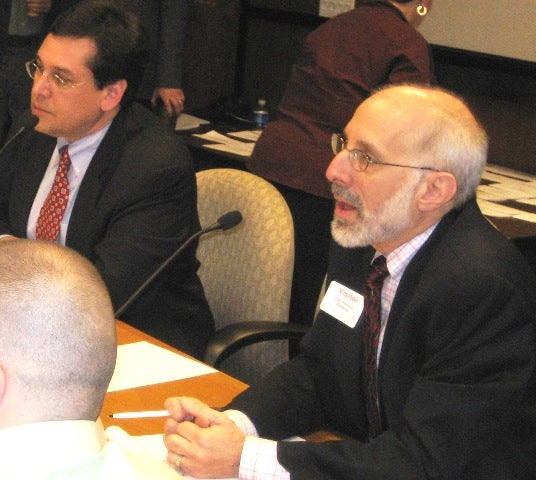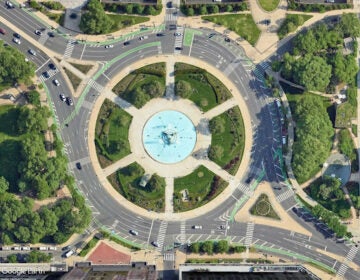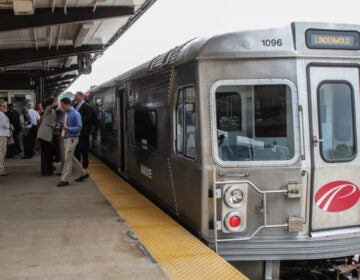Blending citizen and professional expertise

Nov. 21
By Chris Satullo
Philadelphia Inquirer columnist
Harris Sokoloff, who as head of the Penn Project for Civic Engagement, has designed and led the civic dialogues for Great Expectations and the Central Delaware civic visioning project, reflects on those two experiences:
The presentation of the Civic Vision for the Central Delaware on Nov. 14 was a huge success, with more that 1,500 citizens attending the presentation and celebrating both the Vision as well as the civic engagement process that gave rise to it.
As Harris Steinberg of Penn Praxis, which wrote the document, noted, the work of citizens – their values and values based design principles – informed the work of the design professionals who pulled together the plan. Citizen work was the touchstone for the vision – grounding it in what Philadelphians’ care about. Meanwhile, citizens who took part learned from the experts about what’s possible on an urban waterfront.
The process was truly a blending of citizen and professional expertise.
Throughout the riverfront dialogues, we’ve learned a great deal about citizen interest and capacity for substantive engagement, including these points:
• Start by asking about what’s important to citizens. We did this, both on the Central Waterfront and in Great Expectations. And we were greeted by an outpouring of ideas, which didn’t surprise us. What did surprise us was the other response: over and over, people thanked us for asking. More than one participant said, “This is the first time I’ve ever been asked what I thought.”
• Ask about what people know best – what they’re expert in: their families, neighborhoods and lives and their work. So we started by asking what they like about where they live and what could be improved. In the process we learned a great deal about living in different parts of this great city – and we learned that there are more commonalities across neighborhoods than differences.
• Bring together people across neighborhoods, across formal lines of civic associations and city council districts. This diversity enriches the conversation, and helps people see that folks in other parts of the city are very much like them. When they talk across those boundaries, they discover common ground – places where their interests intersect. And they enlarge their own perspectives beyond their own back yards.
• Give them opportunities to learn together – from each other and from professionals. And after they hear from professionals, give citizens a chance to talk with each other about what they heard. Citizens come to this discussion with different background knowledge, so providing an expert presentation or two helps them have some information in common. And giving them time to talk about it afterward gives them a chance to figure out what that new information means – to turn that information into knowledge.
• Provide a structure for them to work substantively together. Conversation can turn into substantive dialogue when structured with an opening question and a goal, when there are goundrules for interacting, and when the structure is designed to get to the goal in a specified period of time. Having trained moderators/facilitators is important to keep things on track, to keep the dialogue and deliberation civil, though passionate.
• Do something with what you hear. While citizens certainly enjoy coming together to talk about important issues –whether it be ideas for the central waterfront or issues in the election or about the future of the city they live in and love – conversation alone is not enough. When you bring citizens together to talk about something, show them the respect of doing something with what they say, and then telling them what you did with it. In the Central Waterfront, each citizen forum provided data that was used in the next round, and all of it became part of the larger planning process. And citizens were shown how their input was used. In the Great Expectation project, citizen input became the foundation for the “Challenges Ahead” series and then part of the Citizen-Driven Agenda.
• After you tell them what you heard, and while you are using what you heard, ask if you got it right. We did this in “feedback” sessions for the waterfront project, and will continue to do it as part of the implementation plan. And we are doing it for the Citizen-driven agenda – by holding a “Citizens Convention” to provide citizens with an opportunity to critique the agenda.
Throughout the Civic Vision for the Central Delaware and Great Expectations projects we have been strengthened by citizen interest in substantive engagement, and their capacity to engage in it. They brought passion to the work, and they bought some skepticism. Their skepticism has, I believe, been reduced by the quality of engagement, and by the quality the work produced so far, which in turn is based in no small part, on the citizen engagement.
The challenge now will be to remain engaged, to continue to be engaged to monitor the implementation of the Civic Vision and to monitor city progress on the Citizen-driven agenda. Based on past interest and on the quality of their engagement to date, we have great expectations for continuing citizen engagement in these and other projects.
WHYY is your source for fact-based, in-depth journalism and information. As a nonprofit organization, we rely on financial support from readers like you. Please give today.






